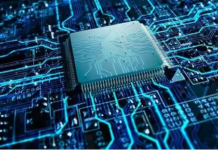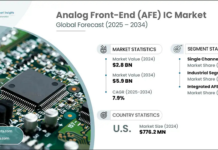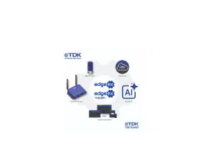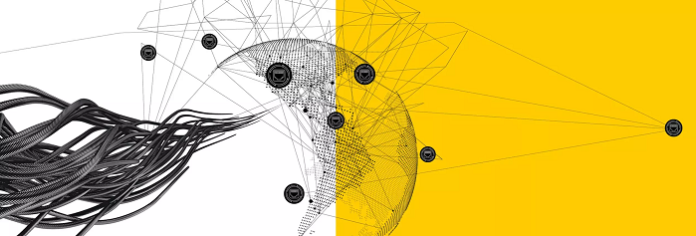
Data as the lifeline of the OT world: smooth communication enabled by one of the most successful international standards projects ever.
In addition to power, data is an essential lifeline for our modern societies. Uniform international standards are an essential precondition for the smooth functioning of global communication systems. The dominant transmission technology, especially in Local Area Networks (LAN), is based on the IEEE802 protocols. These include wireless data transmission, such as WiFi, Bluetooth or, in future, LiFi (short for “Light Fidelity”) in accordance with IEEE802.11 and, of course, the cable-based IEEE802.3 transmission protocols for Ethernet.
The cable infrastructure for copper-based or optical cabling is specified in the ISO/IEC 11801-x series of standards. The standards are internationally valid and are usually adopted unchanged in European and national standards. This series of standards serves as guidelines and manual for setting up standardised cabling systems. The various application areas, such as office buildings, data centres or industrial networks, have adapted sections that address the specific requirements in each case. With regard to suitable cables and connection technology, reference is made to the relevant cable and connector standards.
As a result, this standards landscape ranks as one of the most successful international standards projects of all time.
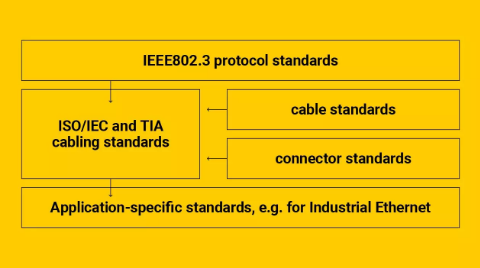
This results in a complete and perfectly harmonised standards ecosystem comprising all the necessary information for planning, setting up and operating the cabling infrastructure. All the data that we use every day as a matter of course is transmitted by way of these networks. The coordination work for these internationally uniform standards is what makes today’s technologised world possible. Accordingly, this standards landscape and the associated product ecosystem ranks as one of the most successful international standards projects of all time. This is also reflected by the globally standardised RJ45 interface, which is virtually omnipresent and is therefore also a figurative synonym for Ethernet.
Today, we encounter Ethernet not only in the IT world, but in all sectors of the All Electric Society (AES) with the Energy, Industry, Mobility, Infrastructure and Agriculture sectors relevant to HARTING. Naturally, the Ethernet transmission protocols used here are the same as in IT, but for these OT applications the cabling infrastructure must be adapted to the specific requirements of the respective sectors. This pertains to more robust cable designs that can withstand the often harsh ambient requirements in terms of climate, as well as chemical and mechanical stability over the long term. The data interfaces must also be adapted to these requirements accordingly. Power supply and data transmission are increasingly being combined in one single cable and one interface in order to save installation space and facilitate handling. The charging cables for e-vehicles is a good example of this. A combined cabling infrastructure, however, is also becoming increasingly widespread in automation under the catchword of “One Cable Automation” (OCA for short).
Looking beyond the various sectors, it quickly becomes evident that the defined Ethernet protocols must be standardised, while the infrastructure must always be designed specifically for its intended use. This means that in addition to the RJ45, which dominates the IT market, a whole range of connectors tailored to the respective requirements are called for. To put it in a nutshell, we use standardised Ethernet protocols with a diverse cabling infrastructure and customised connection technology for the All Electric and Connected Society.
Now that all applications can be connected from the device level down to the data centre with the Ethernet protocols at work today and the associated cabling infrastructure, the focus of ongoing IEEE activities is on completing the SPE protocols in terms of higher speeds and longer transmission lengths on the one hand and, in the area of high-performance data centres, on ever higher speeds of 200/400/800 Gbit or, in the near future, of up to 1.6 Tbit in order to provide the necessary bandwidth between servers for compute-intensive AI and AI applications.
Source: www.harting.com



